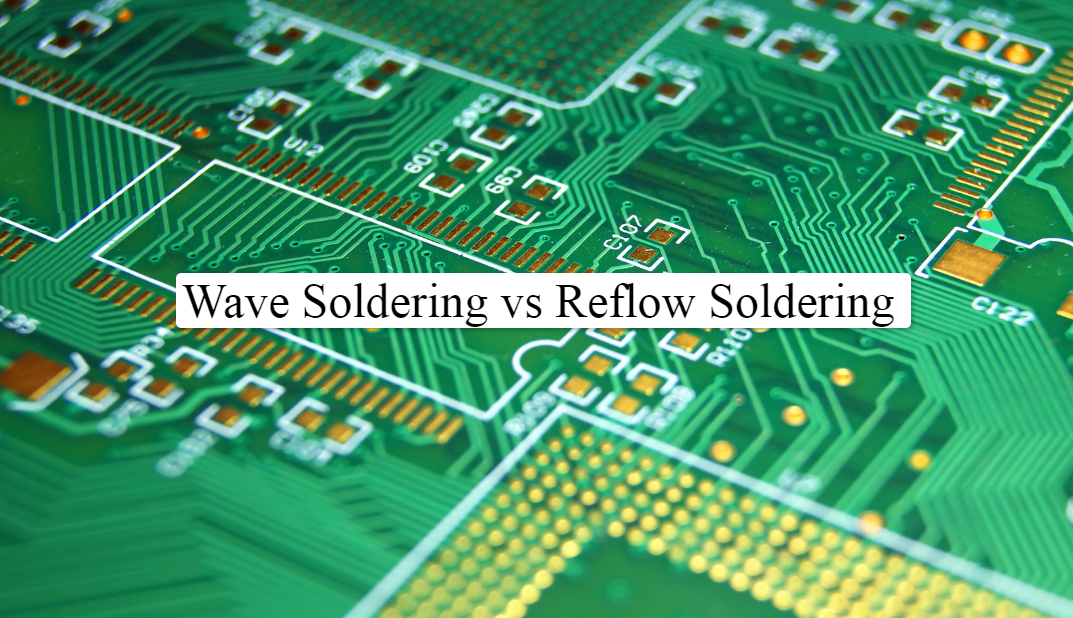
7 Key Differences between Wave Soldering & Reflow Soldering
There have been many advancements in the newer technology and tools, as you will find something new being invented every day. While designing the PCB, it is necessary that you take all the necessary steps to improve the efficiency of the circuit board. Soldering has taken the processing of circuit boards to the next level; otherwise, they would have the same functioning as you will find today. Soldering involves a lot of different techniques and is crucial in deciding the quality of the board that needs to be designed. With this, the circuits stay at the right place on the board. The different soldering techniques are used depending on the PCB circuit that needs to be designed or manufactured.
Two of the most popular soldering techniques include the wave soldering and reflow soldering, each of which is completely different from each other. Here, in this article, we are going to talk about the different soldering techniques and how they are different from each other so that you can choose the one that meets the requirements and objectives of your project.
What are the differences between Wave Soldering and Reflow Soldering?
Wave soldering and reflow soldering are completely different from each other in a large number of ways and have a different functionality altogether. Read below to know more about these techniques and what makes them unique in their own way:
| Wave Soldering | Reflow Soldering |
| Wave soldering involves the components to be soldered using a wave crest, which is made using the melted solder. | It involves soldering the component using reflow, which is formed through hot air. |
| It is much more complex than reflow soldering. | It is a slightly less complicated technique. |
| It requires careful monitoring of issues such as temperature and time, depending that is needed to solder a component. Wave soldering can lead to defects in the board design if it is not maintained properly. | It does not require specific control over the environment and offers flexibility during the designing phase of the circuit boards. |
| This technique consumes less time while soldering the PCBs and is much economical when compared to other techniques. | This technique is slower and expensive when compared to wave soldering. |
| There are multiple things that you need to keep in mind while considering these particular techniques, such as shapes and sizes of heat sinking, pads, layout, and placement for efficient soldering to ensure better results. | It is not necessary for you to consider factors that are necessary to take into account in wave soldering. |
| This is particularly done when you want to do bulk soldering. You can easily manufacture a large number of PCBs in a short time with this technique. | This particular soldering method is used when you need to manufacture less number of circuit boards. |
| It is ideal for soldering through-hole components, thus make sure to utilize this technique for this particular purpose. | You can use this particular technique for surface mount devices that are used on the PCB. |
Both of these soldering processes have their pros and cons, and choosing the right method depends on the design of the PCB’s or printed circuit boards. The requirements of the soldering process are specified by the company itself. And if you are new to this process, then it would be better to seek expert help to ensure that you select the right method before starting the process. It would be better to talk to an expert to have a clear idea about what you are looking for as they have wide experience in manufacturing and designing the components and can help you make use of the reflow and wave soldering techniques in the most efficient way.
I hope you are now aware of the key differences between these two techniques and how they are useful when you are trying to meet specific objectives. Make sure that you take assistance from a well-known manufacturer who can guide you through the entire process and ensure that you are choosing the right method as that would eventually save a lot of your time, effort, and money. Always consider the technical and operational aspects before you choose a soldering method so that you are saved from unnecessary expenditures.

